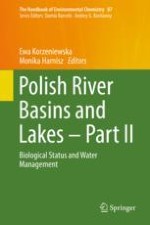2020 | OriginalPaper | Buchkapitel
Cyanobacteria and Toxic Blooms in the Great Mazurian Lakes System: Biodiversity and Toxicity
verfasst von : Aleksandra Bukowska, Tomasz Kaliński, Ryszard J. Chróst
Erschienen in: Polish River Basins and Lakes – Part II
Aktivieren Sie unsere intelligente Suche, um passende Fachinhalte oder Patente zu finden.
Wählen Sie Textabschnitte aus um mit Künstlicher Intelligenz passenden Patente zu finden. powered by
Markieren Sie Textabschnitte, um KI-gestützt weitere passende Inhalte zu finden. powered by
